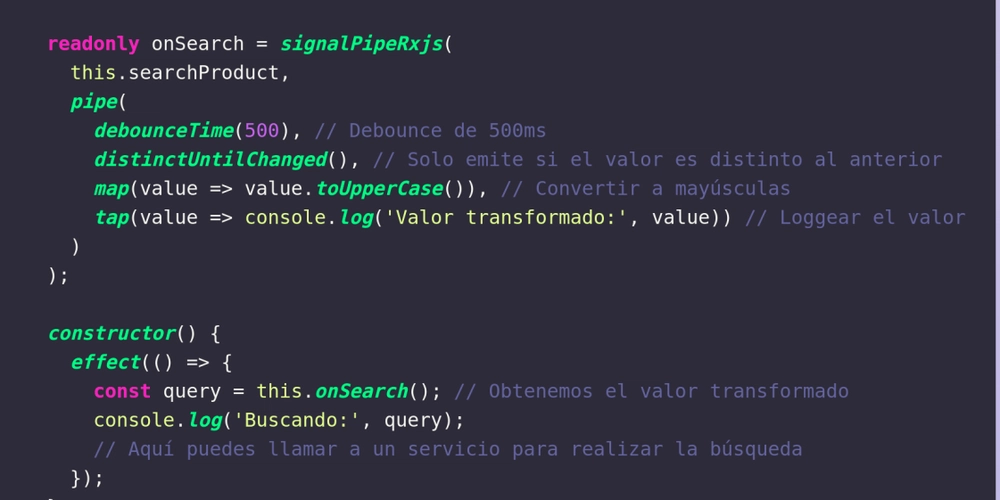The Power of Building Software with a Human-Centered Approach
In today’s fast-paced software development landscape, it’s easy to become consumed with the latest tools, frameworks, and algorithms. While these technical aspects are undeniably important, there’s one essential factor that shouldn’t be overlooked: the user. Ultimately, the success of any software solution lies in its ability to meet real human needs. But how do we, as developers, shift our focus from just creating functional code to delivering exceptional user experiences? Taking a human-centered approach to development ensures that every feature, design decision, and line of code is aligned with the needs of the people who will actually use it. This approach isn’t just a passing trend—it’s becoming a core principle for teams and developers looking to create impactful, long-lasting solutions. Why Focusing on the User Is Crucial Software exists to solve problems for people. Whether it’s making a task easier, helping users make decisions, or simply improving everyday life, user-focused development ensures that your product is both relevant and impactful. A human-centered mindset means that developers look beyond the technical requirements and consider the experiences of the people using the software. Key Benefits of a Human-Centered Approach: Improved User Engagement: When software is intuitive and user-friendly, users are more likely to engage with it, return to it, and recommend it to others. Better Problem-Solving: A deep understanding of user pain points leads to more effective solutions, preventing the development of overly complex features that don’t meet the needs of the target audience. Stronger Client Relationships: When businesses prioritize user needs, it builds trust with clients, showing a commitment to solving real-world challenges. How to Implement Human-Centered Practices in Software Development Adopting a human-centered approach requires a shift in perspective. Instead of focusing solely on features or technical specifications, consider the following steps to better align your development process with the needs of your users: User Research and Feedback: Before jumping into code, invest time in understanding the end-user. This might involve user interviews, surveys, or testing existing solutions. Gathering this feedback early can help ensure that the final product is truly solving a meaningful problem. Prototyping and Iteration: Building prototypes and iterating based on user feedback helps ensure that your solution meets their needs. This process minimizes costly mistakes and leads to faster delivery of more refined products. Collaboration Between Developers and Designers: The best user experiences come from tight collaboration between developers and designers. A design that’s feasible to build and a codebase that’s easy to maintain are equally important for creating seamless experiences. Prioritize Accessibility: Ensuring that your solution is accessible to all users, regardless of their abilities, will not only increase its reach but also demonstrate your commitment to inclusivity. Creating Impactful Software Solutions There are development teams and agencies that recognize the importance of human-centered development and weave this philosophy into every project they undertake. By focusing on the needs of users and designing with empathy, these teams are able to deliver solutions that are not just functional but also meaningful. Such an approach leads to high-quality products that don’t just solve problems—they create positive experiences for users and clients alike. Conclusion: Building with Purpose and Empathy At the heart of great software is a deep understanding of the user. By adopting a human-centered approach, developers can create applications that are not only technically sound but are also intuitive, engaging, and accessible. Whether you're working on a startup project or an enterprise solution, ensuring that your development process is focused on the human experience will ultimately lead to better outcomes. This philosophy is at the core of Elite Dev Squad, where we prioritize user-centric development to deliver solutions that truly resonate with the end-users and help businesses achieve lasting success. Have you implemented a human-centered approach in your development process? How do you ensure your software meets the needs of real users? Share your thoughts and experiences in the comments below—let’s continue the conversation on how we can create software that truly makes a difference.

In today’s fast-paced software development landscape, it’s easy to become consumed with the latest tools, frameworks, and algorithms. While these technical aspects are undeniably important, there’s one essential factor that shouldn’t be overlooked: the user. Ultimately, the success of any software solution lies in its ability to meet real human needs. But how do we, as developers, shift our focus from just creating functional code to delivering exceptional user experiences?
Taking a human-centered approach to development ensures that every feature, design decision, and line of code is aligned with the needs of the people who will actually use it. This approach isn’t just a passing trend—it’s becoming a core principle for teams and developers looking to create impactful, long-lasting solutions.
Why Focusing on the User Is Crucial
Software exists to solve problems for people. Whether it’s making a task easier, helping users make decisions, or simply improving everyday life, user-focused development ensures that your product is both relevant and impactful. A human-centered mindset means that developers look beyond the technical requirements and consider the experiences of the people using the software.
Key Benefits of a Human-Centered Approach:
Improved User Engagement: When software is intuitive and user-friendly, users are more likely to engage with it, return to it, and recommend it to others.
Better Problem-Solving: A deep understanding of user pain points leads to more effective solutions, preventing the development of overly complex features that don’t meet the needs of the target audience.
Stronger Client Relationships: When businesses prioritize user needs, it builds trust with clients, showing a commitment to solving real-world challenges.
How to Implement Human-Centered Practices in Software Development
Adopting a human-centered approach requires a shift in perspective. Instead of focusing solely on features or technical specifications, consider the following steps to better align your development process with the needs of your users:
User Research and Feedback: Before jumping into code, invest time in understanding the end-user. This might involve user interviews, surveys, or testing existing solutions. Gathering this feedback early can help ensure that the final product is truly solving a meaningful problem.
Prototyping and Iteration: Building prototypes and iterating based on user feedback helps ensure that your solution meets their needs. This process minimizes costly mistakes and leads to faster delivery of more refined products.
Collaboration Between Developers and Designers: The best user experiences come from tight collaboration between developers and designers. A design that’s feasible to build and a codebase that’s easy to maintain are equally important for creating seamless experiences.
Prioritize Accessibility: Ensuring that your solution is accessible to all users, regardless of their abilities, will not only increase its reach but also demonstrate your commitment to inclusivity.
Creating Impactful Software Solutions
There are development teams and agencies that recognize the importance of human-centered development and weave this philosophy into every project they undertake. By focusing on the needs of users and designing with empathy, these teams are able to deliver solutions that are not just functional but also meaningful. Such an approach leads to high-quality products that don’t just solve problems—they create positive experiences for users and clients alike.
Conclusion: Building with Purpose and Empathy
At the heart of great software is a deep understanding of the user. By adopting a human-centered approach, developers can create applications that are not only technically sound but are also intuitive, engaging, and accessible. Whether you're working on a startup project or an enterprise solution, ensuring that your development process is focused on the human experience will ultimately lead to better outcomes. This philosophy is at the core of Elite Dev Squad, where we prioritize user-centric development to deliver solutions that truly resonate with the end-users and help businesses achieve lasting success.
Have you implemented a human-centered approach in your development process? How do you ensure your software meets the needs of real users? Share your thoughts and experiences in the comments below—let’s continue the conversation on how we can create software that truly makes a difference.













































































































































































![[The AI Show Episode 142]: ChatGPT’s New Image Generator, Studio Ghibli Craze and Backlash, Gemini 2.5, OpenAI Academy, 4o Updates, Vibe Marketing & xAI Acquires X](https://www.marketingaiinstitute.com/hubfs/ep%20142%20cover.png)































































































































![[DEALS] Microsoft Office Professional 2021 for Windows: Lifetime License (75% off) & Other Deals Up To 98% Off – Offers End Soon!](https://www.javacodegeeks.com/wp-content/uploads/2012/12/jcg-logo.jpg)













































































































































_Anthony_Brown_Alamy.jpg?#)
_Hanna_Kuprevich_Alamy.jpg?#)




.png?#)

























































































![Hands-on: We got to play Nintendo Switch 2 for nearly six hours yesterday [Video]](https://i0.wp.com/9to5toys.com/wp-content/uploads/sites/5/2025/04/Switch-FI-.jpg.jpg?resize=1200%2C628&ssl=1)
![Fitbit redesigns Water stats and logging on Android, iOS [U]](https://i0.wp.com/9to5google.com/wp-content/uploads/sites/4/2023/03/fitbit-logo-2.jpg?resize=1200%2C628&quality=82&strip=all&ssl=1)














![YouTube Announces New Creation Tools for Shorts [Video]](https://www.iclarified.com/images/news/96923/96923/96923-640.jpg)

![Apple Faces New Tariffs but Has Options to Soften the Blow [Kuo]](https://www.iclarified.com/images/news/96921/96921/96921-640.jpg)




































































































































